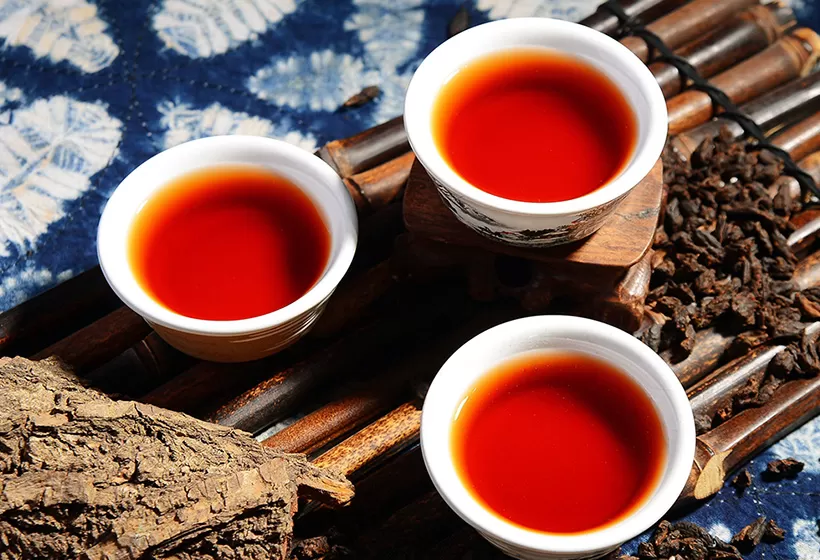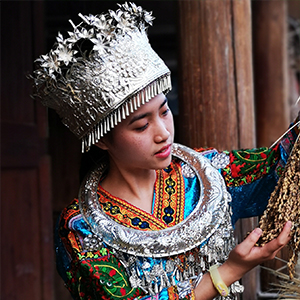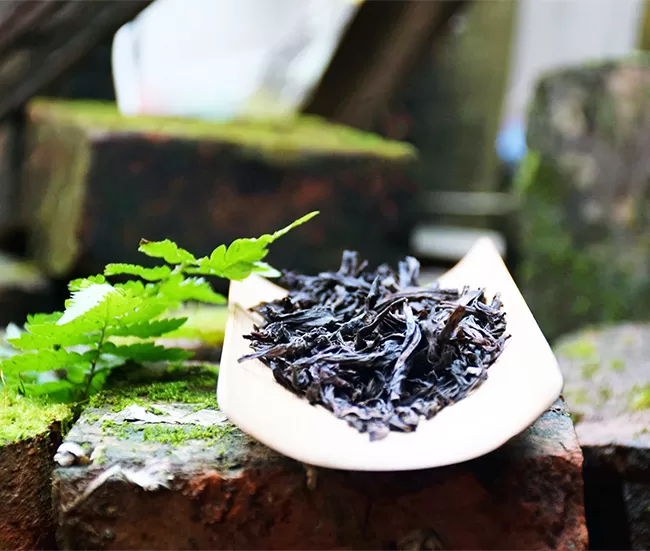A tea lover’s guide to China
Overview
Journeying through China seeing how people live, listening to their story, experiencing their way of life through your own personal accounts—this is the essence of travel, the essence of knowing and feeling China.
In this article under the series of Cultural Experiences in China, we’ll bring you through the history, categories, and the art of tea in China while sum it up to you some of the most fascinating tea cultural experiences in this nation.
Brief history of tea in China
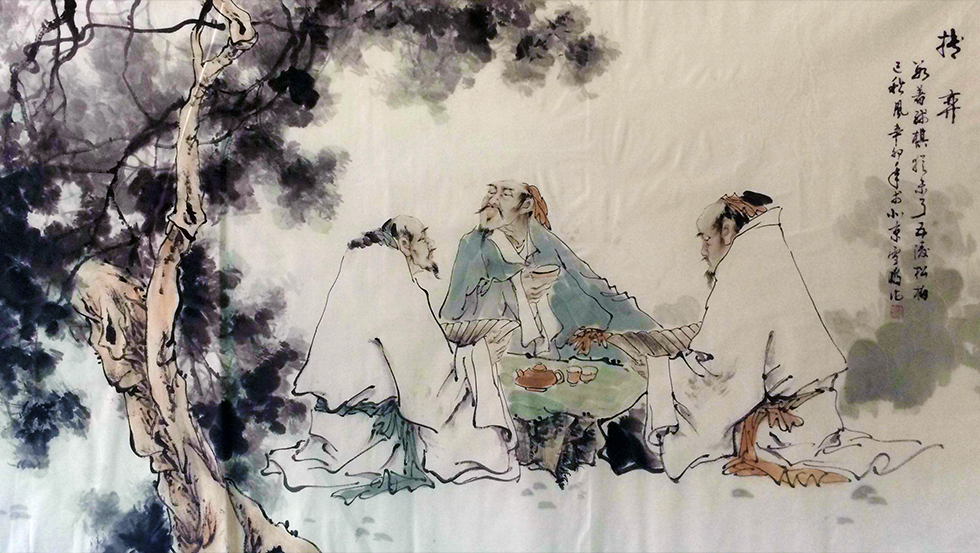 Ancient people drinking tea scene
Ancient people drinking tea sceneTea was primarily used as remedy, due to the medicinal benefits attributed to it throughout the history of China. Legend has it that tea was discovered by the Chinese Emperor Shen Nong, who was sitting beneath a tree waiting for his water to boil when tea leaves fell into his pot. We will first bring you through the history of tea in China staring from the discovery of tea around 5,000 years ago.
| 2737 BCE | Discovery of tea | Discovered of the use of tea leaves as medicine and beverage. |
| Warring State Period (1046-221 BCE) | Cultivation & cooking | The Chinese began to cultivate tea tree and use fresh tea leaves in cooking. |
| Qin dynasty (221-207 BCE) | Tea brewing | Developed the habit of tea brewing, tea drinking, and tea porridge cooking. |
| Han dynasty (202 BCE-220 AD) | Invention of tea cakes and bricks | |
| Tang dynasty
(618-907 AD) | Developed the ‘eating of tea’ where by tea leaves were grinded into powder before boiled together with spices. Ancient Tea-Horse Road was formed, developing trade between central China and Tibet. | |
| Song dynasty
(960-1279 AD) | ||
| Yuan dynasty
(1271-1368 AD) | Focus more on panning of tea leaves and production of loose-packed tea instead of compressed tea. | |
| Ming dynasty
(1368-1644 AD) | ||
| Qing dynasty
(1636-1912 AD) | China became major exporter of teas | -Further development of various types of teas such as white tea, oolong tea and herbal tea. |
Read more>>> Everything you need to know about tea in China
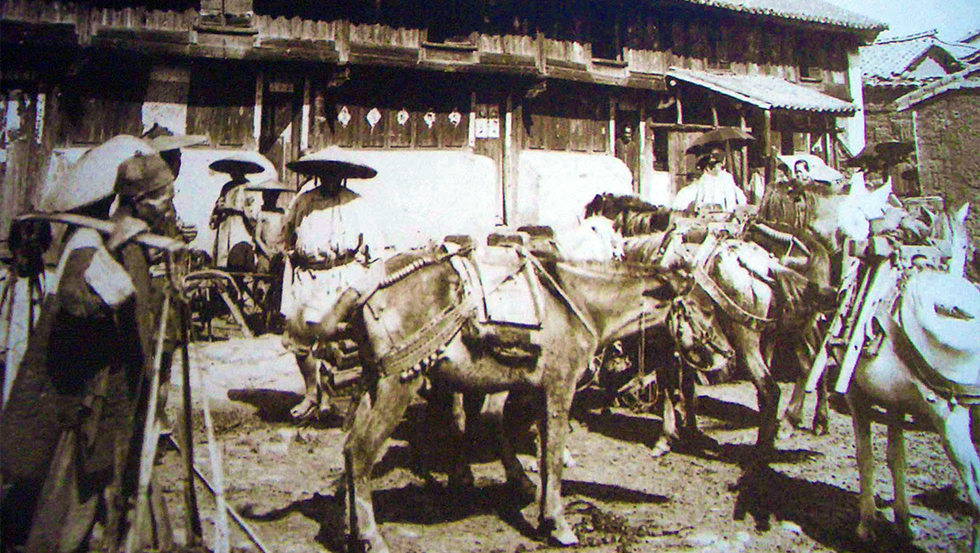 Old Pictures of the Road
Old Pictures of the RoadRelated cultural immersion & tours:
- Ancient Tea and Horse Road day trip >>
- 16 Days Combination of Silk Road and Tibet >>
- 23 Days Silk Road tour with Yunnan >>
- Create a related private China tour
6 classic categories of Chinese teas
Tea is traditionally classified based on the techniques with which it is produced and processed. There is total of six types of teas, though all are harvested from Camellis Sinensis, each with distinct characteristics. Scroll down to find out more.
Different stages of production:
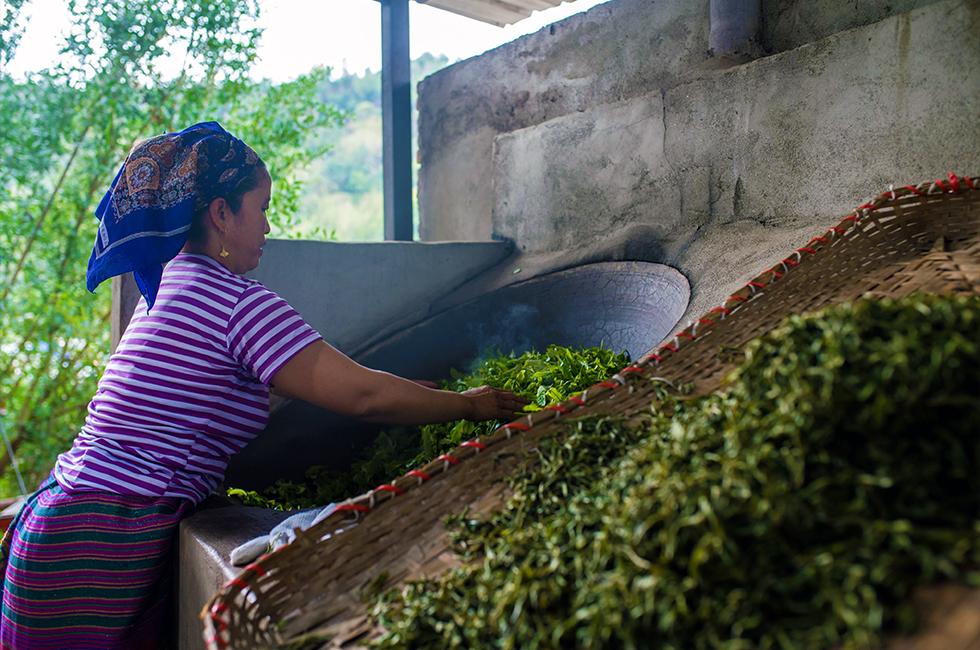 Tea Drying
Tea Drying- Withering: Removing excess water from tea leaves via sun or wind exposure, promoting the breakdown of leaf proteins into free amino acids and increasing the availability of free caffeine.
- Oxidation: Housing tea leaves in a temperature-controlled room where they turn darker as chlorophyll broke down enzymatically and tannins are released or transformed.
- Fixation: Exposing tea leaves to moderate heat to deactivate oxidative enzymes and remove unwanted scents without damaging the flavor of the tea.
- Shaping: Rolling, kneading and forming the leaves into strips, pellets, spheres or other desired shapes.
- Drying: Sunning, panning, air drying or baking the tea leaves.
- Fermenting: Ageing and exposing tea to humidity.
Top 10 famous tea in China
- 01. Junshan Yinzhen/ ‘silver needle’ of Mt. Junshan (yellow tea)
- 02. Dongting Biluochun (green tea)
- 03. Xihu Longjing/ West Lake Dragon Well (green tea)
- 04. Huangshan Maofeng (green tea)
- 05. Dujun Maojian (green tea)
- 06. Xinyang Maojian (green tea)
- 07. Liu’an Guapian (green tea)
- 08. Anxi Tieguanyin (oolong tea)
- 09. Wuyi Yancha (oolong tea)
- 10. Keemun Tea (black tea)
Green tea (non-oxidised)
Unwilted and unoxidised
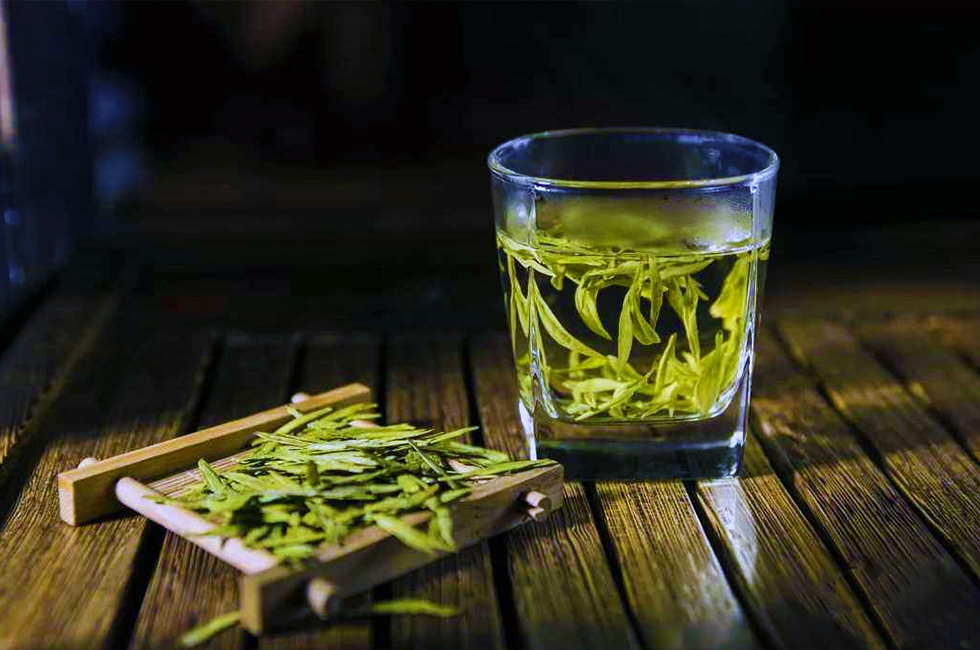 Glass for Green Tea
Glass for Green Tea- Production process: Fixation, shaping, and drying.
- Characteristics: Distinct green coloured tea base and leaves when brewed. Light and delicate flavour, with fresh lingering aftertaste.
- Examples: Longjing/ Biluochun/Huangshan Maofeng
Green tea is the most common type of tea drink by the Chinese throughout the history. It is cultivated mainly in Zhejiang, Jiangsu, Anhui, Henan, Hunan, Hubei, Guangxi, and Guangdong. Fresh green tea leaves are steamed, which preserves the polyphenols, which have strong antioxidant benefits. Green tea contains least amount of caffeine among all six types of tea.
Related cultural experiences:
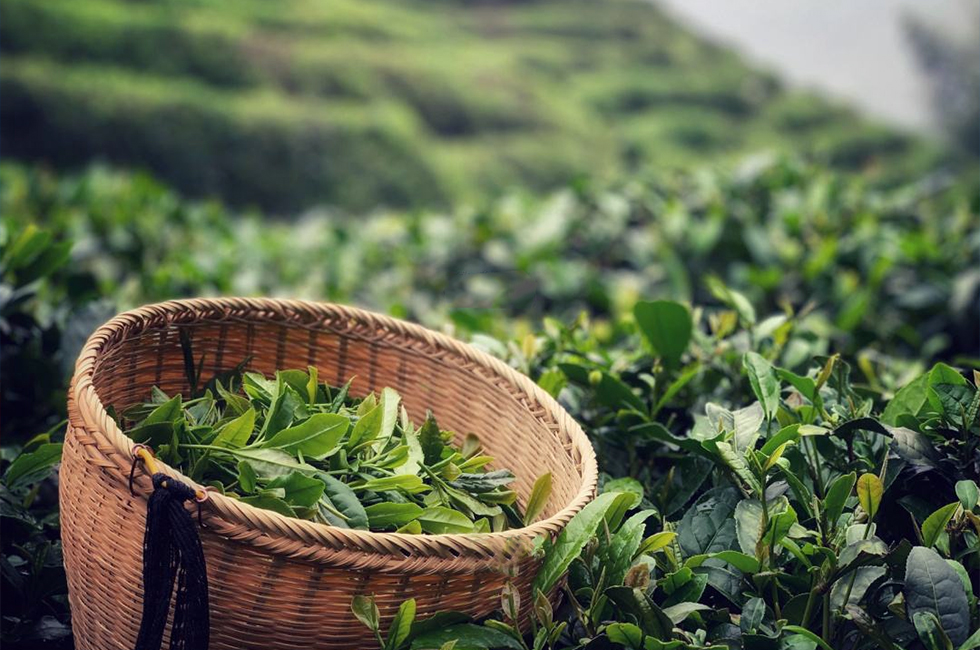 Tea leaves picking
Tea leaves picking- Gain insight on tea leaves picking and art of tea brewing from local tea farmers on a half-day Hangzhou tea culture tour
- Get your own ingredient with a local chef and learn to prepare tea-related dishes in a half-day Hangzhou gastronomy tour
- Half-day Biluochun green tea culture tour in Suzhou (available from late March to early April)
- Spend half day going through the whole process of Lushan Yunwu production-- from the picking of fresh tea buds with local farmers among tea bushes to learning the art of brewing a cup of steaming hot tea. Extension: You can take an hour's drive to Jingdezhen for a pottery class with local masters there.
- Half-day tea culture tour in Zhangjiajie (with optional tea culture-related dinner)
- Tea leaves picking in Yangshuo
Recommended tour: 5 Days Hangzhou Tea Culture and Water Town Tour
White tea (5-10% oxidised)
Wilted and slightly oxidised
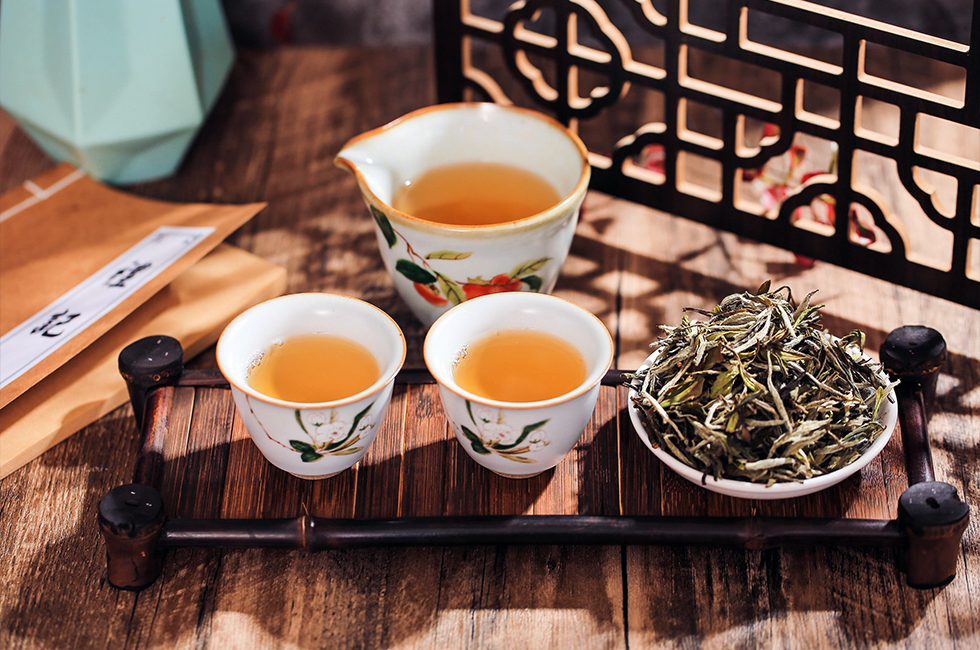 Porcelain cups for White tea
Porcelain cups for White tea- Production process: Withering, shaping and drying.
- Characteristics: White furry surface of dried tea leaves. Sweet, mild, and fruity taste.
- Examples: Baihao Yinzhen/ ‘White Peony’/ Gongmei
White tea is the least processed form of tea and it is mainly cultivated in Zhenghe and Fuding regions in Fujian Province. The leaves of white tea are harvested when they still are covered in silvery white hairs. This type of tea provide a more delicate flavour and contains second least amount of caffeine.
Yellow tea (10-20% oxidised)
Unwilted and unoxidised, but allowed to yellow
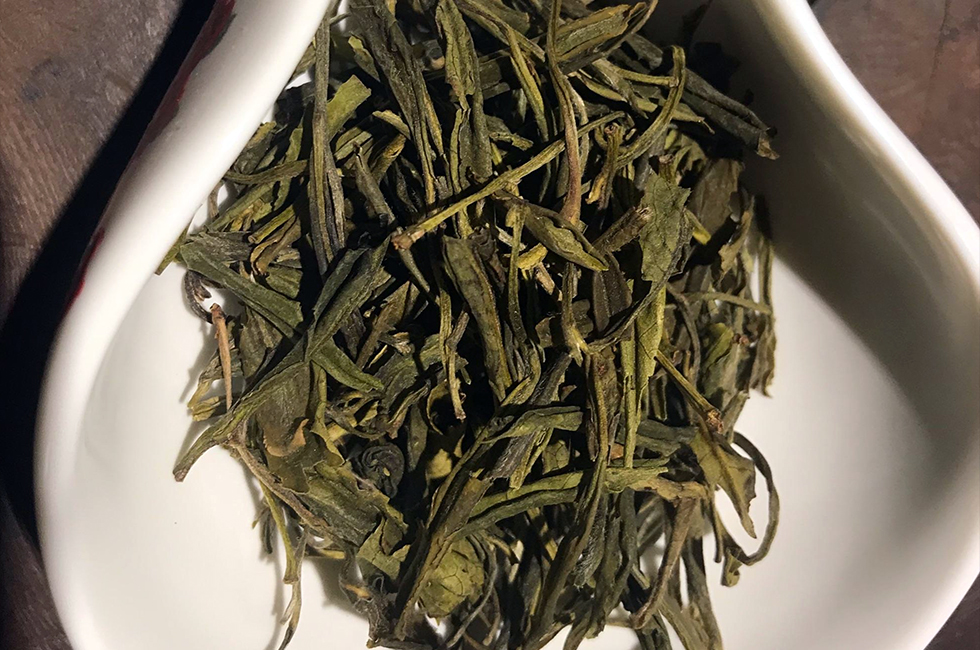 Yellow Tea
Yellow Tea- Production process: Fixation, shaping, heaping to yellow, and drying.
- Characteristics: Fragrant flavour with fresh aftertaste.
- Examples: Junshan Yinzhen/ Huoshan Huangya/ Mengding Huangya
With similar production process as green tea, yellow tea has a more distinctive fragrant initial taste. It is cultivated mainly in Hunan, Hubei, Sichuan, Guangdong, Zhejiang and Anhui.
Related cultural experience: Half day Sichuan tea culture trip to Mt. Mengding
Oolong tea (10-70% oxidised)
Wilted, bruised and partially oxidised
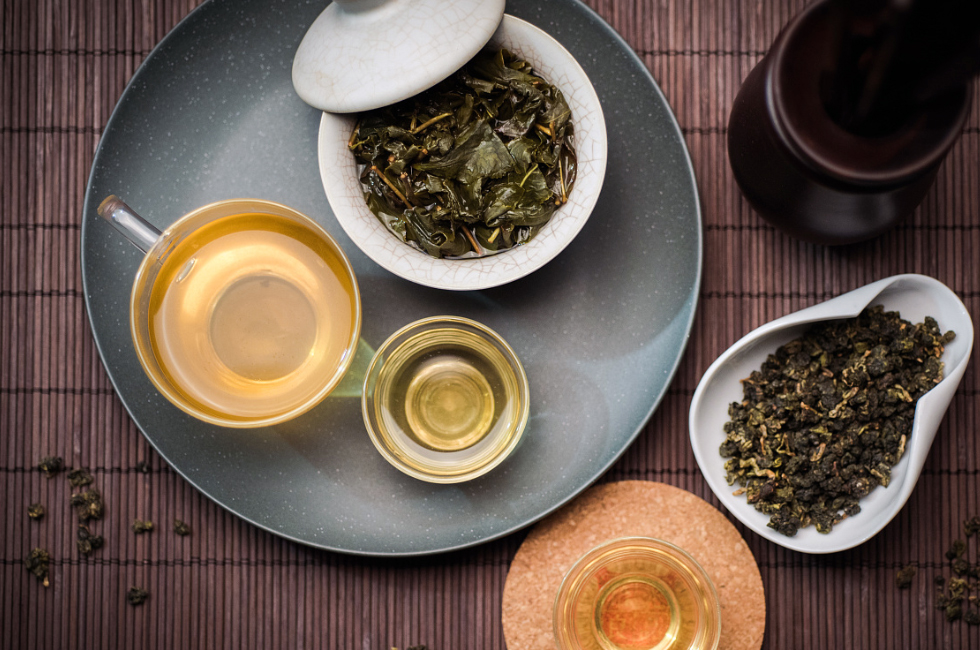 Oolong Tea
Oolong Tea- Production process: Withering, oxidation, fixation, shaping, and drying.
- Characteristics: Red colour edged green leaves when brewed. Delicate bitter flavour with long-lasting sweet aftertaste.
- Examples: Tieguanyin/ Wuyi Dahongpao
Oolong tea is derived from partially oxidised tea leaves and may contains similar amounts of caffeine as white and green tea depending on the duration it was left for oxidation to take place. Oolong tea is mainly cultivated in Fujian, Guangdong and Taiwan.
Recommended tour: Fujian Tea Culture Tour (7 days)
Black tea (70-90% oxidised)
Wilted, sometimes crushed, and fully oxidised
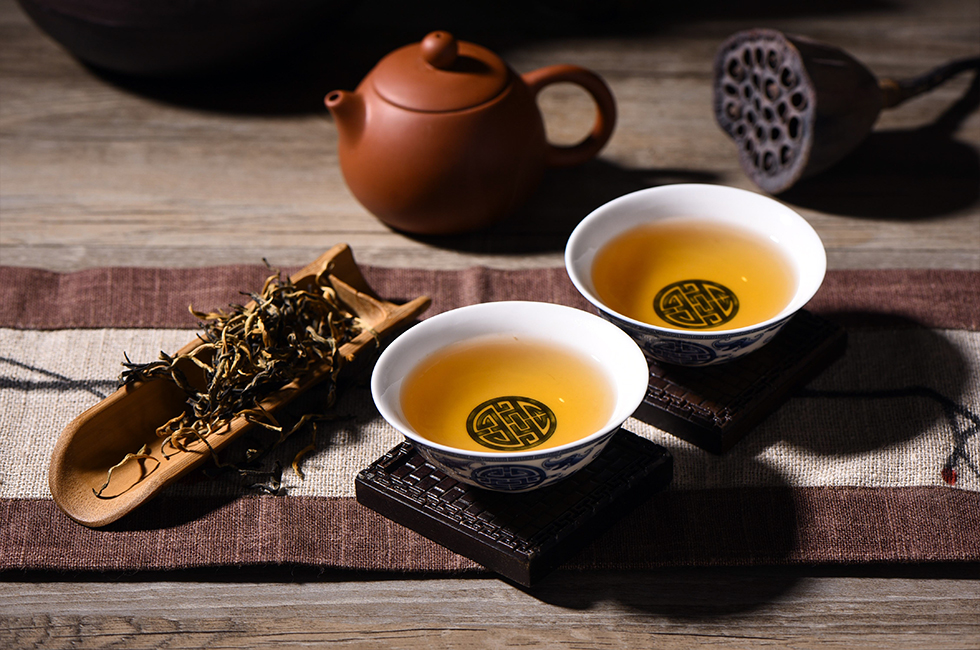 Black Tea
Black Tea- Production process: Withering, shaping, oxidation, and drying.
- Characteristics: Red coloured tea base and leaves when brewed. Strong, robust initial flavour with fruity and sweet aftertaste.
- Examples: Keemun Tea/ Wuyi Jinjunmei/ Lapsang souchong
Black tea is the most processed of the tea leaves, containing more caffeine than any other teas made from Camellia sinensis plant. It is mainly grown in southeast coastal region of China alongside Yunnan and Sichuan provinces.
Related cultural experience: Follow local tea farmers to find out the story behind each cup of tea in Huangshan
Dark tea (90-100% fermented)
Post-fermented tea
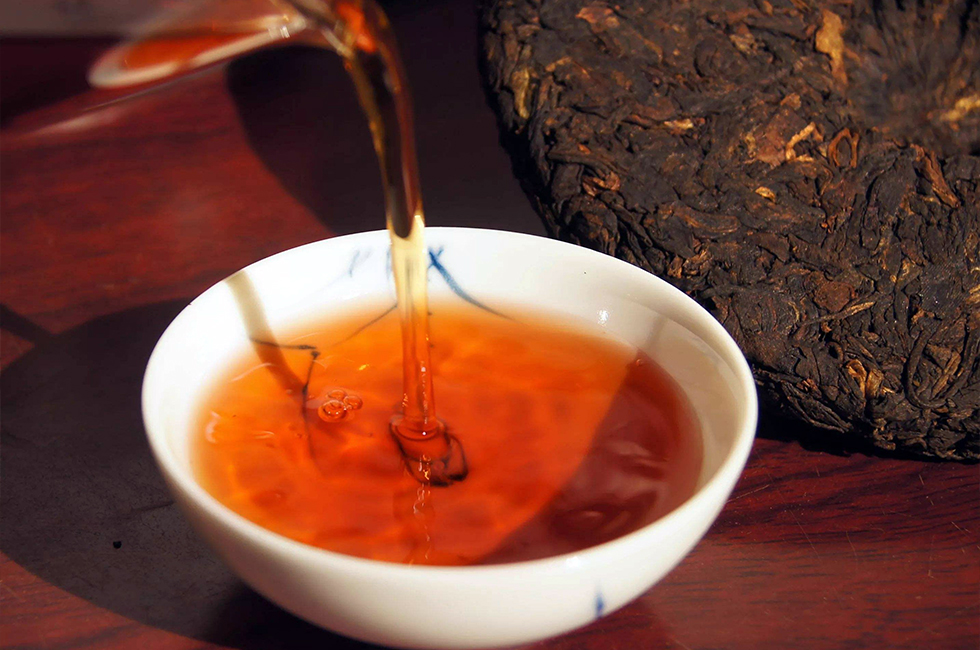 Dark Tea
Dark Tea- Production process: Withering, shaping, fermentation, and drying.
- Characteristics: Robust and sweet flavour throughout.
- Examples: Pu’erh/ Liubaocha
This special type of tea is left for fermentation over several months to even several years giving it an enriching flavour and nutritious elements. It is mainly grown in Hunan, Hubei, Guangxi, Yunnan, Sichuan and Shaanxi.
Related cultural experience: Join the half day tea culture tour in Yunnan which includes compressing your own Pu’erh tea cake (do visit between early March and late April to experience picking of tea leaves).
Other types and uses of tea
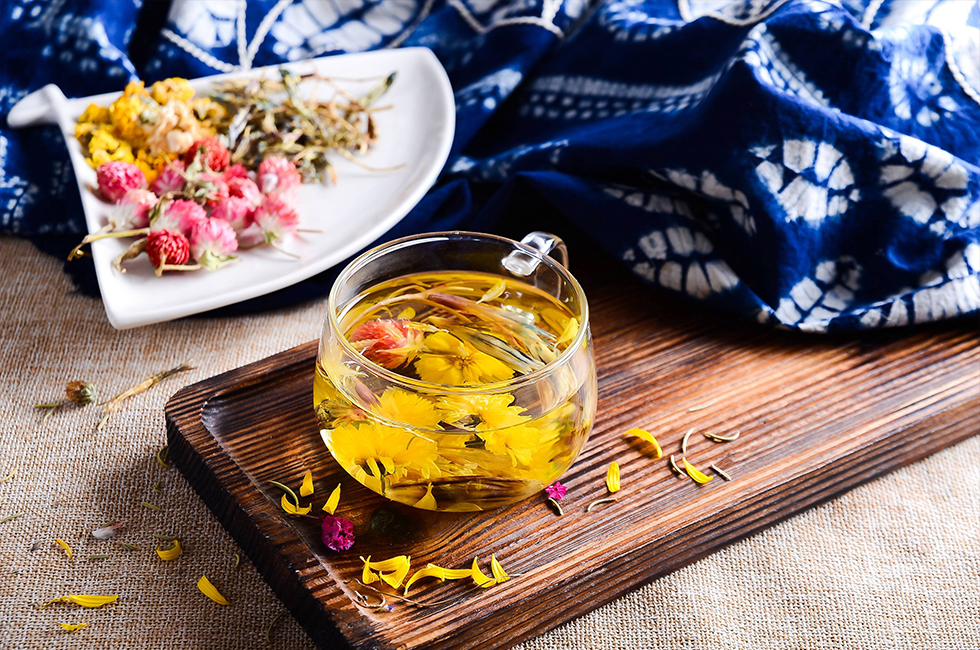 Flower Tea
Flower TeaBesides the six classic types of teas mentioned above, there are also flower tea and herbal tea such as chrysanthemum tea, wolfberry tea, jasmine tea and Osmanthus tea. As you jump to the more remote regions in China, you’ll meet different ethnic minorities with the same habit of consuming tea yet in their own unique ways.
Related cultural experiences:
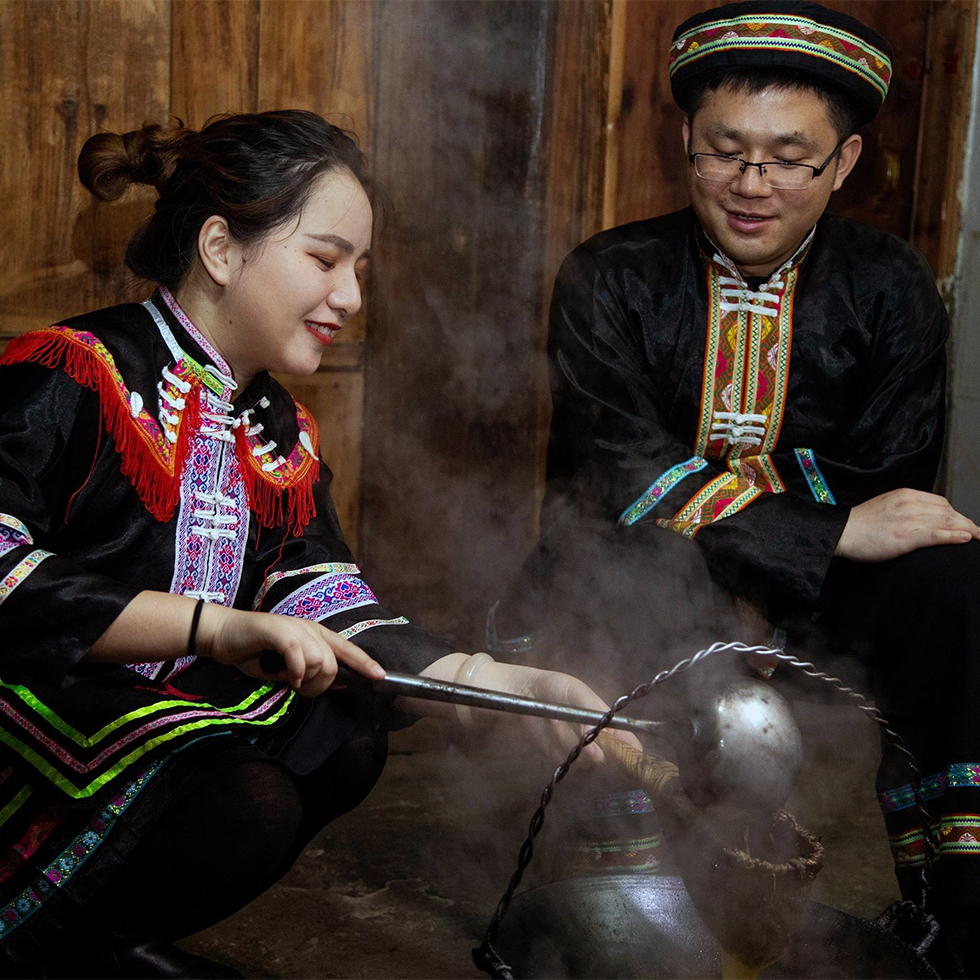 Oiled Tea Making
Oiled Tea Making- -Learn to cook oil tea from the Dong ethnic people in Guilin (using green tea).
- -Make Tibetan yak butter tea in Tibet (using black or dark tea).
- -Sample the unique Mongolian milk tea without missing out their thrilling Naadam Festival in Inner Mongolia.
- -Follow the local to make chrysanthemum tea in Huangshan.
- -Join Hong Kong gastronomy tour to taste authentic Hong Kong milk tea.
- -Customise a trip to Xishuangbanna, and meet the Jino people who use fresh tea leave in cooking and making salad.
Tea ceremony
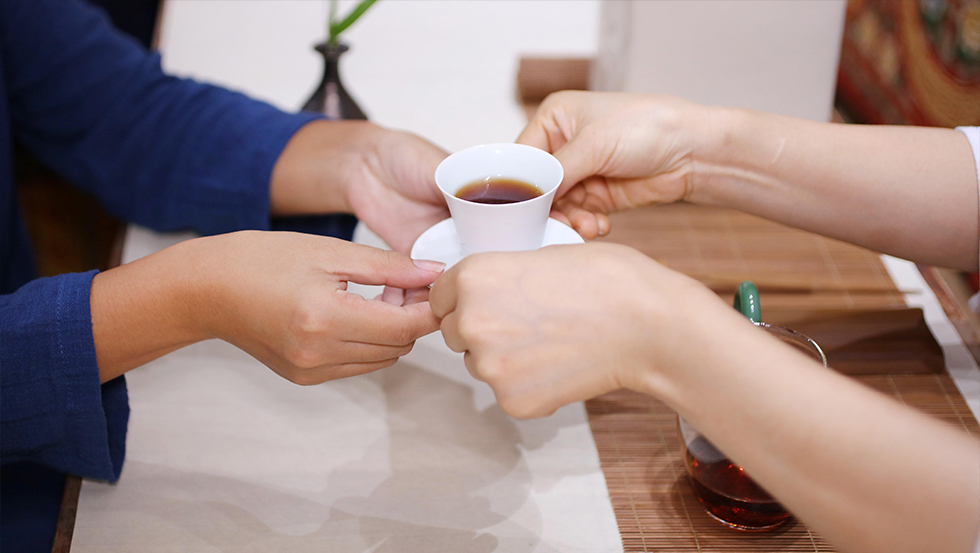 Chinese Tea Ceremony
Chinese Tea Ceremony Chinese tea ceremony refers to the ‘art of tea’ in Chinese which focus on the harmony of tea, water, utensils, preparation, environment and conversation between host and guests. Each cup of tea is brewed with ritual.
Common tea ware use in a tea ceremony: tea tray, tea pot, Gaiwan (Chinese lidded bowl), tea filter, tea pitcher/fair cup, pinming cup (for drinking tea), aroma cup (for smelling fragrant of tea), tea holder.
Tea ceremony set: tea vase, tea scoop, tea spoon, tea filter, tea pin, and tea tweezers.
Brief procedure of Chinese tea ceremony:
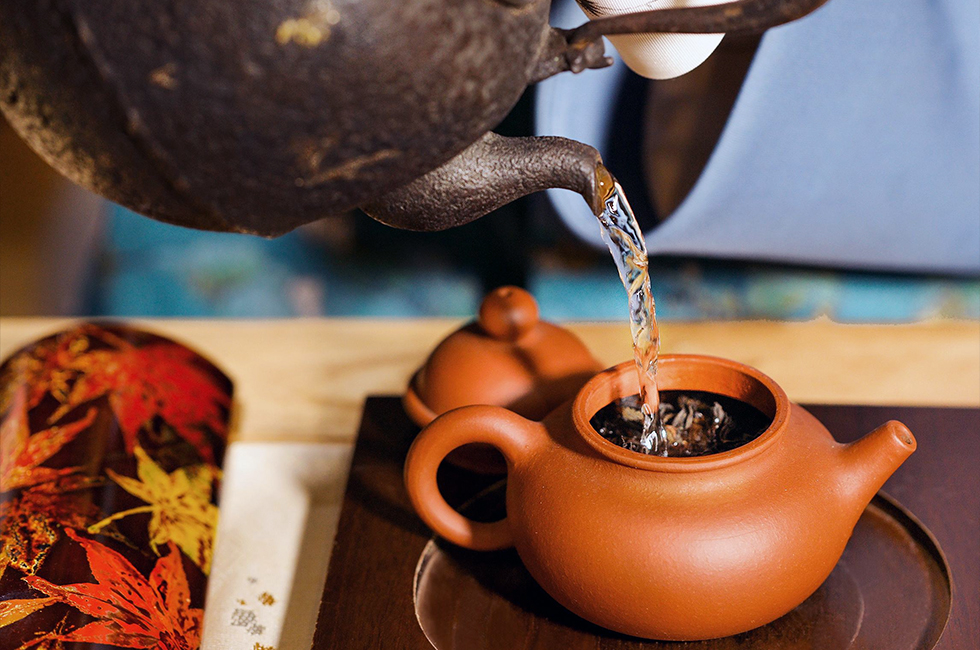 Make tea with boiling water
Make tea with boiling water- 1. Wash hands
- 2. Heat water (temperature of water use to brew different types of tea differs)
- 3. Rinse tea wares using hot water
- 4. Put the appropriate amount of tea leaves into tea pot
- 5. Rinsing of tea leaves using hot water
- 6. Brewing
- 7. Filter the tea into fair cup
- 8. Pour the tea into aroma cup before transfer it into pinming cup
If you want to know more about Chinese tea ceremony, you can extend your reading to the article of: Chinese tea ceremony in a nutshell.
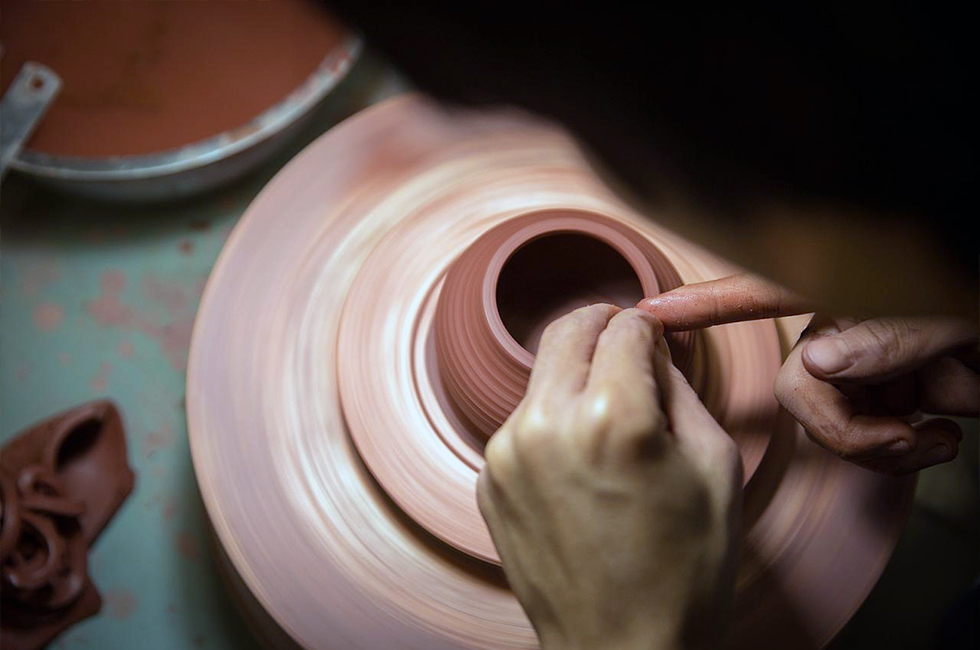 Teapot making
Teapot makingRelated cultural experience:
- Learn the art of tea from skilled instructor in Confucius hometown
- Learn about Bai ethnic minority culture and their ‘three courses of tea’
- Jian ware making
- Purple pottery/ black pottery cultural immersion session
- Purple clay pottery making
- Copper teapot making in Xinjiang
Recommended tour: In-depth Discovery of China Porcelain Culture (14 days)
Benefit of tea drinking
The main health-promoting substances in tea are polyphenols which linked to a lower risk for diabetes and possibly cardiovascular disease, as polyphenols help regulate blood sugar (glucose) in our body. Tea consumption may not be the magic bullet, but it can be incorporated in an overall healthy diet with whole grains, fish, fruits and vegetables, and less red and processed meat.
While on your trip in China, have a cup of hot tea at:
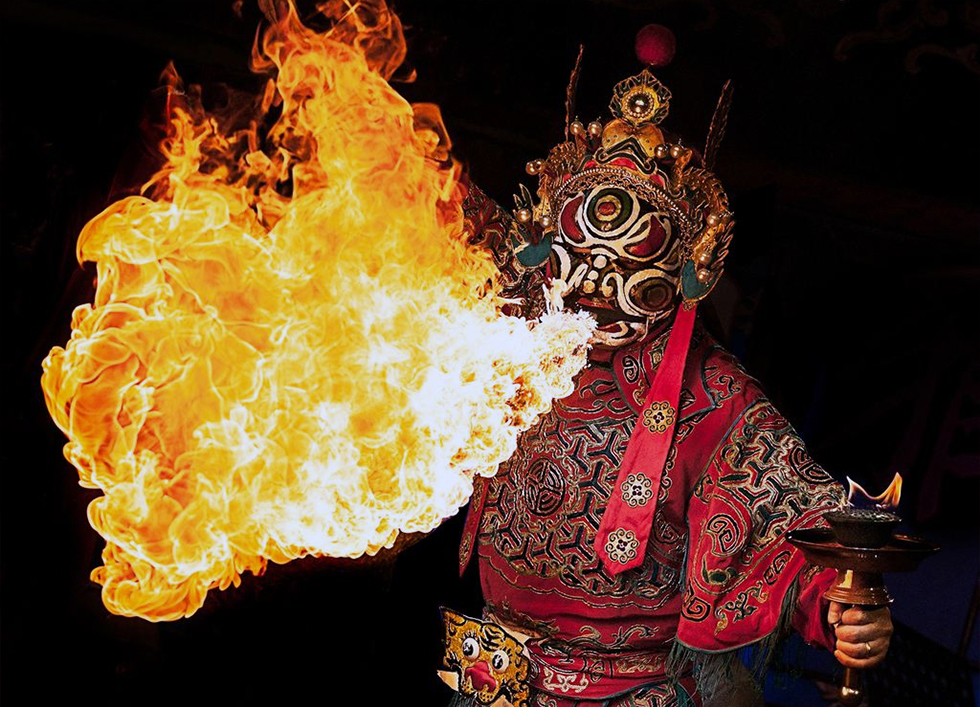 Show in a tea house
Show in a tea house- -Laoshe Tea House with opera performances in the house in Beijing.
- -Shu Feng Ya Yun Sichuan Opera Theatre including face-changing and other show.
- -A local teahouse while listen to local artists performing Suzhou Pingtan (a form of storytelling and singing).
- -Hundred Year Old Tea House in Kashgar.
You can also participate in indigenous flower cake baking lesson and Yunnan cheese-making class to get your exotic afternoon tea snacks even in your own kitchen when returning home from your trip.
Tips on tea drinking
After water, tea is the most widely consumed beverage in the world, thus, it’s important to follow some precautions while consuming.
| / | Favourable temperature range (℃) | Max. number of brew/ pot | Max. duration of each brew (min) | Type of tea set |
|---|---|---|---|---|
| Green Tea | 80-85 | 2-3 | 2-3 | Porcelain |
| White Tea | Around 90 | 4-5 | 5 | Gaiwan (Chinese lidded bowl) |
| Yellow Tea> | 70-85 | 2-3 | 2-3 | Gaiwan/ Glassware |
| Oolong Tea | 100 | 7-8 | 2-5 | Purple clay pottery |
| Black Tea | 90-95 | 3-4 | 3-5 | Glassware |
| Dark Tea | 100 | 8-10 | 2-3 | Purple clay pottery |
Note: These set of value may vary with different kinds of tea even if they are same type of tea.Caffeine contained in each types of tea (in descending order): Black tea> Dark tea> Oolong tea> Yellow tea> White tea> Green tea.
- Those who are allergic or sensitive to caffeine should choose green, white, or yellow teas and avoid drinking any caffeinated teas in the afternoon or evening.
- Avoid drinking tea with an empty stomach.
- Avoid drinking tea that’s been brewed and left for over 12 hours.
Begin your cup of journey with us
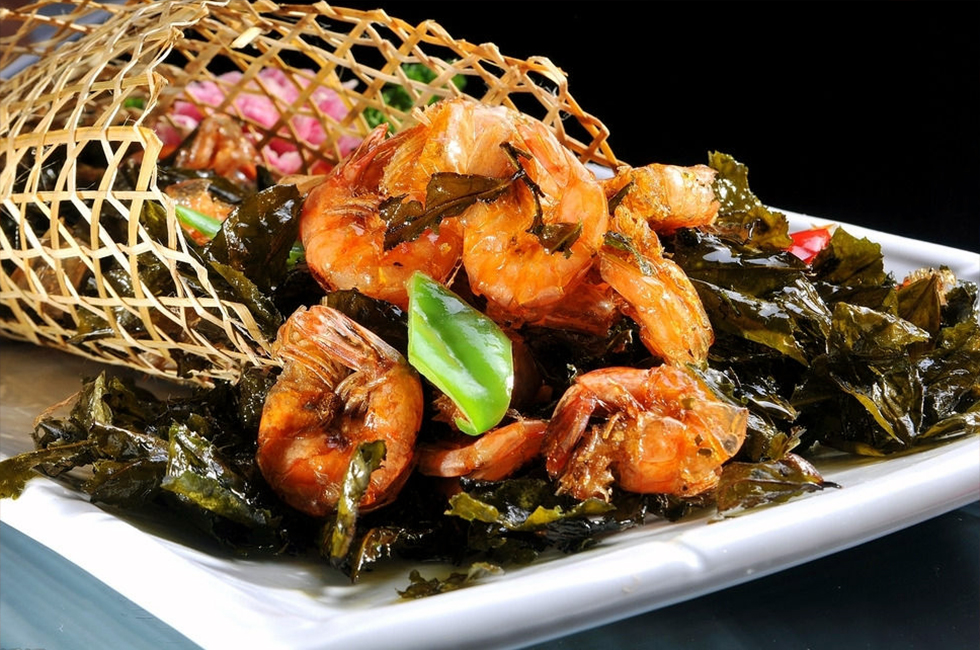 Tea cuisine
Tea cuisineA trip to China would be incomplete without a refreshing cup of tea. Besides including those tea related cultural experiences mentioned above, here are three tour samples to begin your tour planning:
- A Tea Journey to East China & Zhangjiajie (12 days)
- A Tea Journey to Southwest China: Chengdu, Yunnan, Guilin and Hong Kong (14 days)
- A Tea Journey to South China - Hangzhou, Fujian, Yunnan and Chengdu (22 days)
Browse our wonderful range of cultural immersion opportunities available in different regions of China. Follow China Culture Tour on any social media that’s available at the moment, and don't forget to subscribe to our newsletter so you won’t miss out any update on China travel tips and tours.
GREAT FAMILY CHINA TOUR
JULY 2024 We wanted to thank Grace at China Culture tour for organizing a great tour of China. We enjoyed our Beijing - Xian-Chengdu -Guilin -Yangshuo - Shanghai trip. Our local guides Bruce in Beijing, Susan in Xian, Jane in Chengdu, Mike in Guilin and Mary in Shanghai took care of us…read more details »
Teng Han L from SINGAPORE
Ready to Create a Unique Dream Travel?
